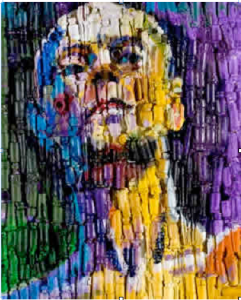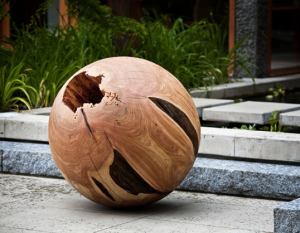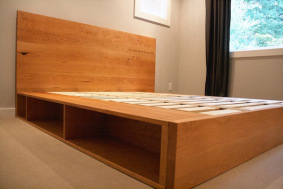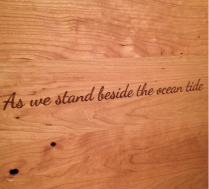I was asked by a friend and artisan Meredith Nicole of Oden Gallery to share my thoughts on storytelling and craft. Here is the article I wrote for The Province’s blog as part of Meredith’s 5 part series.
As we walk through our home, my husband and I are often struck by the amount of stories that fill up our space. We love to support local artisans, especially when we have a personal connection to their work.
I started Narrative Communications six years ago so that I could tell stories for a living. I’ve learned that the best stories are those that have rich, emotional qualities, stories that reflect who we were, who we are and who we want to be. In my line of work, I come across more stories than you can imagine and every single time I am struck by the raw emotion we, as humans, feel when we tell a story.
Storytelling doesn’t need to follow a linear timeline; we can jump between the past, present and future as we dance between our dreams and our reality. The one thing that all stories have in common is a catalyst; something that pushes us into, or out of, the narrative. For artists, that catalyst is often something deep inside them, something that needs to emerge or be expressed.
As a Brand Mythologist, I get to meet creatives all the time who are passionate about their craft, their material and their clients. In my experience, there are three types of stories that my artistic clients tell:
 The Artist’s Story: The first type explores the artist’s personal story, their reason for being, and it is often something they have been asking themselves for a very long time. A few years ago, I worked with renowned artist and painter Tiko Kerr and it struck me how much of his own story, and his view of the world, showed up in his work. We spent countless hours digging into his narrative to understand the trajectory his life has been on through his art. It was a magical experience for me because I got to step into the mind of one of Vancouver’s most beloved artist and allow that story thread to weave it’s way through his pieces, both old and new.
The Artist’s Story: The first type explores the artist’s personal story, their reason for being, and it is often something they have been asking themselves for a very long time. A few years ago, I worked with renowned artist and painter Tiko Kerr and it struck me how much of his own story, and his view of the world, showed up in his work. We spent countless hours digging into his narrative to understand the trajectory his life has been on through his art. It was a magical experience for me because I got to step into the mind of one of Vancouver’s most beloved artist and allow that story thread to weave it’s way through his pieces, both old and new.
The Client’s Story: The second type is usually based on commission – art that is made specifically for someone based on who they are or what they like. This is one of the reasons my husband and I love walking through our home with guests; we get to tell them how each piece of art contributes to our story. When Johan and I moved into our new home last year, we wanted as many locally-sourced, artisan pieces as we could afford. It was serendipitous that I met Meredith Nicole just before we moved when I was facilitating a brand storytelling workshop. Johan and I asked Meredith if she would build us a custom bed that reflected our story and she was immediately brimming with ideas. In the end, Meredith crafted us a bed made from a fallen cherry tree from the Okanagan; we loved the warmth of the wood and the fact that she built in shelves for maximum storage. The pièce de resistance was when she engraved words from our wedding ceremony into the headboard, As we stand beside the ocean tide, words that epitomized our rainy Tofino beach wedding just months before.
 The Material’s Story: Finally, the third type of story many artists tell is that of the material. This is the most esoteric of them all, and often requires suspending reason and falling into our imagination. There are many reasons artists choose to work with certain material; cost, durability, ease. Yet for some, like Brent Comber, the material chose them. Brent is fourth generation North Vancouverite, and his ancestors worked with wood. Brent believes that when he works with wood, he connects with and reveals the stories that exist within the material. One afternoon, my client, the Capilano Suspension Bridge, called Brent Comber to see if he wanted a rotting tree that had to come down in their park. They told him the tree was likely 1,600 years old, and Brent knew at that moment that he had a story to tell. He decided to carve the tree into giant spheres to highlight the tree rings and give equal importance to every part of the tree. I had the privilege of helping him tell the story not only of the sphere, but of the tree itself.
The Material’s Story: Finally, the third type of story many artists tell is that of the material. This is the most esoteric of them all, and often requires suspending reason and falling into our imagination. There are many reasons artists choose to work with certain material; cost, durability, ease. Yet for some, like Brent Comber, the material chose them. Brent is fourth generation North Vancouverite, and his ancestors worked with wood. Brent believes that when he works with wood, he connects with and reveals the stories that exist within the material. One afternoon, my client, the Capilano Suspension Bridge, called Brent Comber to see if he wanted a rotting tree that had to come down in their park. They told him the tree was likely 1,600 years old, and Brent knew at that moment that he had a story to tell. He decided to carve the tree into giant spheres to highlight the tree rings and give equal importance to every part of the tree. I had the privilege of helping him tell the story not only of the sphere, but of the tree itself.



